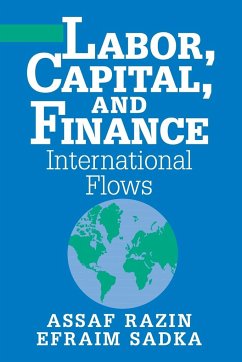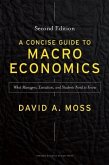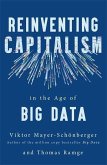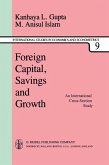Traditional textbook analysis of international trade and labour movements typically ignores basic features of the welfare state. Similarly, the theory of finance and capital structure seldom treats international capital flows and their implications for central macroeconomic variables such as saving and investment. Under such circumstances, barriers to capital flows are undesirable. Despite the volumes that have been written on the markets and the desirability of regulating capital flows, there has been little work on the magnitude of distortions in these flows. This book fills a gap by combining elements from these disjointed parts of economics and presents them in an analytical framework. It lays the groundwork for the integration of capital, labour, and finance into a unified treatment of globalisation. The book is intended as a compact textbook for advanced undergraduate and graduate courses in international economics and public economics. It also serves as a reference for researchers and professionals.
Table of contents:
Part I. A Standard Analysis of Factor Mobility: 1. Beneficial versus distortionary mobility of factors of production; 2. Factor mobility and goods trade: do they substitute each other?; Part II. Migration to the Welfare State: 3. Intertemporal social insurance and migration; 4. Intratemporal social insurance: attractiveness to migrants and attitude of native-born; 5. Intratemporal social insurance: the interaction between migration and the size of the welfare state; 6. The effects of migration on the welfare state: empirical evidence; Part III. Distorted Capital Flows: 7. Bank runs and capital flow reversals; 8. Country risk and capital flow reversals; 9. Foreign portfolio equity investment and the saving-investment correlation; 10. Foreign direct investment: a challenge for control of domestic capital; 11. Foreign direct investment: a vehicle for technology transfer and increased competition.
This book fills a gap in the literature by combining elements from seemingly disjointed parts of economics and presents them in a consistent analytical framework. It lays the groundwork for the integration of capital, labor, and finance into a unified treatment of globalization.
This treatment offers a model of globalization by examining international labor, finance, and capital flows.
Table of contents:
Part I. A Standard Analysis of Factor Mobility: 1. Beneficial versus distortionary mobility of factors of production; 2. Factor mobility and goods trade: do they substitute each other?; Part II. Migration to the Welfare State: 3. Intertemporal social insurance and migration; 4. Intratemporal social insurance: attractiveness to migrants and attitude of native-born; 5. Intratemporal social insurance: the interaction between migration and the size of the welfare state; 6. The effects of migration on the welfare state: empirical evidence; Part III. Distorted Capital Flows: 7. Bank runs and capital flow reversals; 8. Country risk and capital flow reversals; 9. Foreign portfolio equity investment and the saving-investment correlation; 10. Foreign direct investment: a challenge for control of domestic capital; 11. Foreign direct investment: a vehicle for technology transfer and increased competition.
This book fills a gap in the literature by combining elements from seemingly disjointed parts of economics and presents them in a consistent analytical framework. It lays the groundwork for the integration of capital, labor, and finance into a unified treatment of globalization.
This treatment offers a model of globalization by examining international labor, finance, and capital flows.








